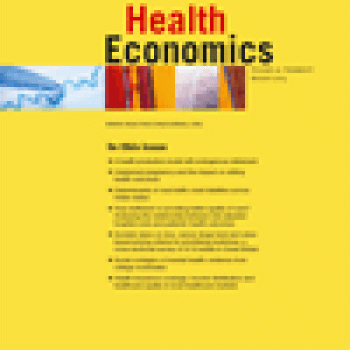Publication Information

This work considers whether planning matters with respect to the effect of a new sibling on another siblings' health. Objective health outcomes are observed before and after a new addition to the family. To date, the literature on family size has focused on a quality-quantity trade-off; the more children in a family, the less resources devoted to each child. We present a theoretical framework which highlights that the quantity-quality trade-off may only be relevant in the case of an unplanned sibling. We also suggest that a planned sibling may result in health gains for the other children. We use two waves of data for more than 1800 children from Peru from the Young Lives Project to test our hypothesis. The data relate to the children at 1 and 5 years. For health outcomes, height for age and weight for age Z are considered. The results highlight significant negative independent effects on height for age when an unplanned sibling is added to the household. In addition, we find positive sibling effects on height for age when a planned sibling arrives. We find only small planning effects for weight for age. We view our hypothesis as a pathway that can further explain the quantity-quality trade-off.
Keywords: Unplanned pregnancy; Child health; Parental investments; Health outcomes; Height for age; Weight for age
Article written using Young Lives data from the UK Data Archive by researchers from the Department of Social Policy, London School of Economics and Political Science and the School of Economics, University of Queensland.
ReferenceGrace Lordan and Paul Frijters (2013) '‘Unplanned Pregnancy and the Impact on Sibling Health Outcomes', Health Economics 22.8: 903–914.
The full version of the article is available on the journal website.

This work considers whether planning matters with respect to the effect of a new sibling on another siblings' health. Objective health outcomes are observed before and after a new addition to the family. To date, the literature on family size has focused on a quality-quantity trade-off; the more children in a family, the less resources devoted to each child. We present a theoretical framework which highlights that the quantity-quality trade-off may only be relevant in the case of an unplanned sibling. We also suggest that a planned sibling may result in health gains for the other children. We use two waves of data for more than 1800 children from Peru from the Young Lives Project to test our hypothesis. The data relate to the children at 1 and 5 years. For health outcomes, height for age and weight for age Z are considered. The results highlight significant negative independent effects on height for age when an unplanned sibling is added to the household. In addition, we find positive sibling effects on height for age when a planned sibling arrives. We find only small planning effects for weight for age. We view our hypothesis as a pathway that can further explain the quantity-quality trade-off.
Keywords: Unplanned pregnancy; Child health; Parental investments; Health outcomes; Height for age; Weight for age
Article written using Young Lives data from the UK Data Archive by researchers from the Department of Social Policy, London School of Economics and Political Science and the School of Economics, University of Queensland.
ReferenceGrace Lordan and Paul Frijters (2013) '‘Unplanned Pregnancy and the Impact on Sibling Health Outcomes', Health Economics 22.8: 903–914.
The full version of the article is available on the journal website.

